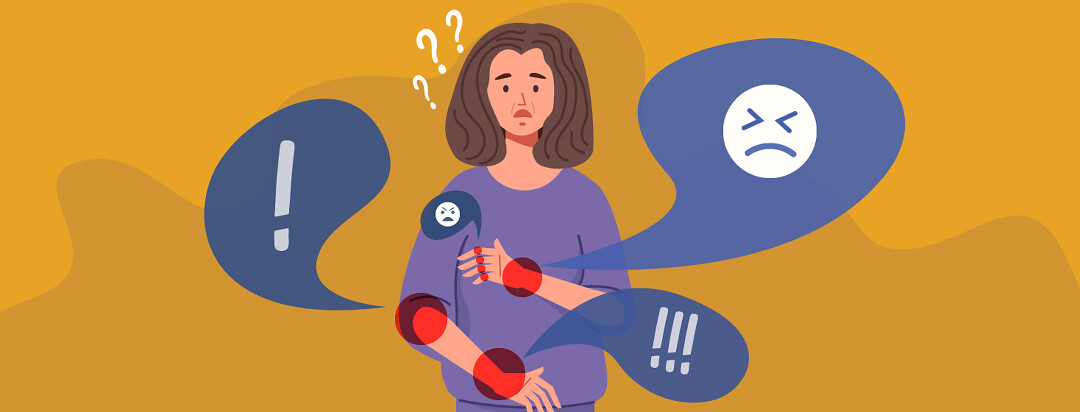The Link Between Lupus and Avascular Necrosis
Inflammation caused by lupus can impact all parts of your body, even your bones. One common health condition that happens along with lupus is the bone disease avascular necrosis.
What is avascular necrosis?
When there is less blood flow and more pressure within part of a bone, the result is an illness called avascular necrosis (AVN). The bone then weakens, causing small breaks. Sometimes AVN is so severe that the surface of the bone collapses.
AVN can affect the:1,2
- Hips
- Knees
- Spine
- Shoulders
- Wrists
If AVN takes hold of the surface of the joint, osteoarthritis can quickly develop.1,2
Lupus and avascular necrosis
People living with lupus have a higher risk of also having AVN. Experts are still studying the connection between these 2 illnesses. However, they think 1 possible cause is the use of corticosteroids.1
These drugs work to ease the pain, stiffness, and swelling of lupus. Some people with lupus need high doses of corticosteroids to manage severe kidney and brain diseases that can happen with lupus.
The downside is side effects and illnesses like AVN, as well as:3
- Weight gain
- Bruising
- Bone thinning
- High blood pressure
- Diabetes
- Infection
Plus, the longer you take high doses of corticosteroids, the greater your chance of side effects.3
AVN causes and risk factors
Researchers are not exactly sure what causes AVN. They are studying the idea that fat develops within small vessels of the bone. It blocks the vessels and reduces blood flow. AVN is also linked with:4,2
- Alcohol abuse
- Obesity
- Sickle cell anemia
- Thalassemia
- Pancreatitis
- HIV
- Dialysis
- Kidney transplant
- Gaucher disease and other fat storage illnesses
- Trauma such as a bone bruise or stress fracture
- High doses of corticosteroids over a lengthy period
Women are 3 times more likely to have AVN than men, as are people over age 60. If you have lupus, your race or ethnicity may also play a role in whether you develop AVN. Researchers have found that Black and some Asian people (Thai and Chinese) are more likely to have the illness.5
AVN symptoms
Joint pain is the first sign of AVN, usually in the hips, shoulders, and knees. You will probably notice it the most when you put pressure on these joints as you walk, run, or lift something. Your muscles may twitch, and joints will feel stiff and swollen. If the disease gets worse, pain could keep you up at night.2
AVN treatments
There is no cure for AVN, but treatment can ease pain and help with better joint movement. Which treatment you receive depends on which joint is affected and how badly it is damaged.4
In the early stages of the illness, your doctor may prescribe drugs for pain and to prevent further bone weakness and damage. Advanced AVN, where the surface of the joint has collapsed, could require surgery.
Treatment for those under age 50 may involve grafting new bone or cartilage onto the affected area. A surgeon could also remove damaged cartilage or drill to lower pressure in the bone and restore blood flow. Older adults with AVN who also have severe osteoarthritis may need joint replacement surgery.4
Have you experienced lupus and avascular necrosis?

Join the conversation